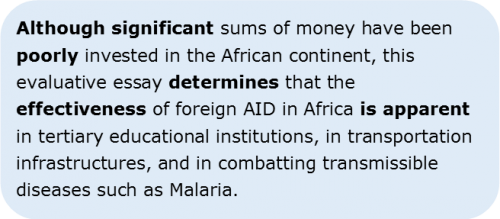What is stance in academic writing?

This is the first of three chapters about Stance. To complete this reader, read each chapter carefully and then unlock and complete our materials to check your understanding.
– Introduce the concept of stance in an academic essay
– Explore when a writer would be required to include stance
– Provide an example of stance to help guide the reader
Chapter 1
This short reader deals with the concept of stance in academic writing. In this first chapter, what stance is and how it’s useful in English for Academic Purposes will be discussed, with Chapter 2 then dealing with the various types of stance that may be used by a writer. In the third and final chapter, we explore how stance may be effectively maintained throughout an essay, focussing on the importance of repeating stance across essay elements beyond the introductory thesis statement.
What is stance?
You may have already submitted an academic essay to your tutor and be somewhat confused by feedback comments, such as ‘Where is your stance?’ or ‘Your stance could be clearer here’. Stance is an important academic concept, yet it’s also an area of academic writing that student’s often struggle with. This is because the clear demonstration of stance requires careful linguistic skill and attention to detail.
In short, stance in academic writing is most simply described as being the attitude of the writer towards the thesis, arguments or evidence that are described in the essay, such as whether the writer agrees or disagrees with a particular piece of information. Most commonly used in evaluative essays, effective stance usually requires at least some investigation of both sides of the argument, with the writer clearly expressing which side they concur with the most. The following thesis statement contains clear examples of the language of stance:

From this example thesis statement, the reader can clearly determine that the writer intends to evaluate the effectiveness of foreign AID on the African continent. Even though the writer provides some concession in the counter argument that ‘significant sums of money have been poorly invested’, overall the writer’s stance in this example is clearly positive, offering the opinion that foreign AID has had a mostly beneficial impact in Africa. Ultimately then, stance is the indication of a writer’s judgement, evaluations and opinions of a piece of evidence or information.
When should stance be included?
Stance isn’t a requirement for all essay types such as descriptive essays, but it is usually necessary to include the stance of the writer when arguing persuasively about a topic – such as in an evaluative essay. Generally, any time that a writer is required to provide a judgement about an aspect of an academic assignment (whether it’s an evaluation of the overall topic, a particular argument or a piece of evidence), that writer should make their stance very clear to the reader.
As will be discussed in more depth in Chapter 3, stance may be most easily demonstrated across thesis statements, topic sentences, evaluations of evidence, summary sentences and thesis restatements. In fact, to include stance most effectively, a writer will be required to remind the reader of their opinions and judgements at various points throughout an essay. To do this, there are particular language structures available to a writer, as is outlined in Chapter 2.
To reference this reader:
Academic Marker (2022) Stance. Available at: https://academicmarker.com/essay-writing/introductory-paragraphs/stance/ (Accessed: Date Month Year).
Downloadables
Once you’ve completed all three chapters about stance, you might also wish to download our beginner, intermediate and advanced worksheets to test your progress or print for your students. These professional PDF worksheets can be easily accessed for only a few Academic Marks.
Collect Academic Marks
-
100 Marks for joining
-
25 Marks for daily e-learning
-
100-200 for feedback/testimonials
-
100-500 for referring your colleages/friends